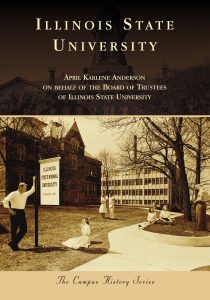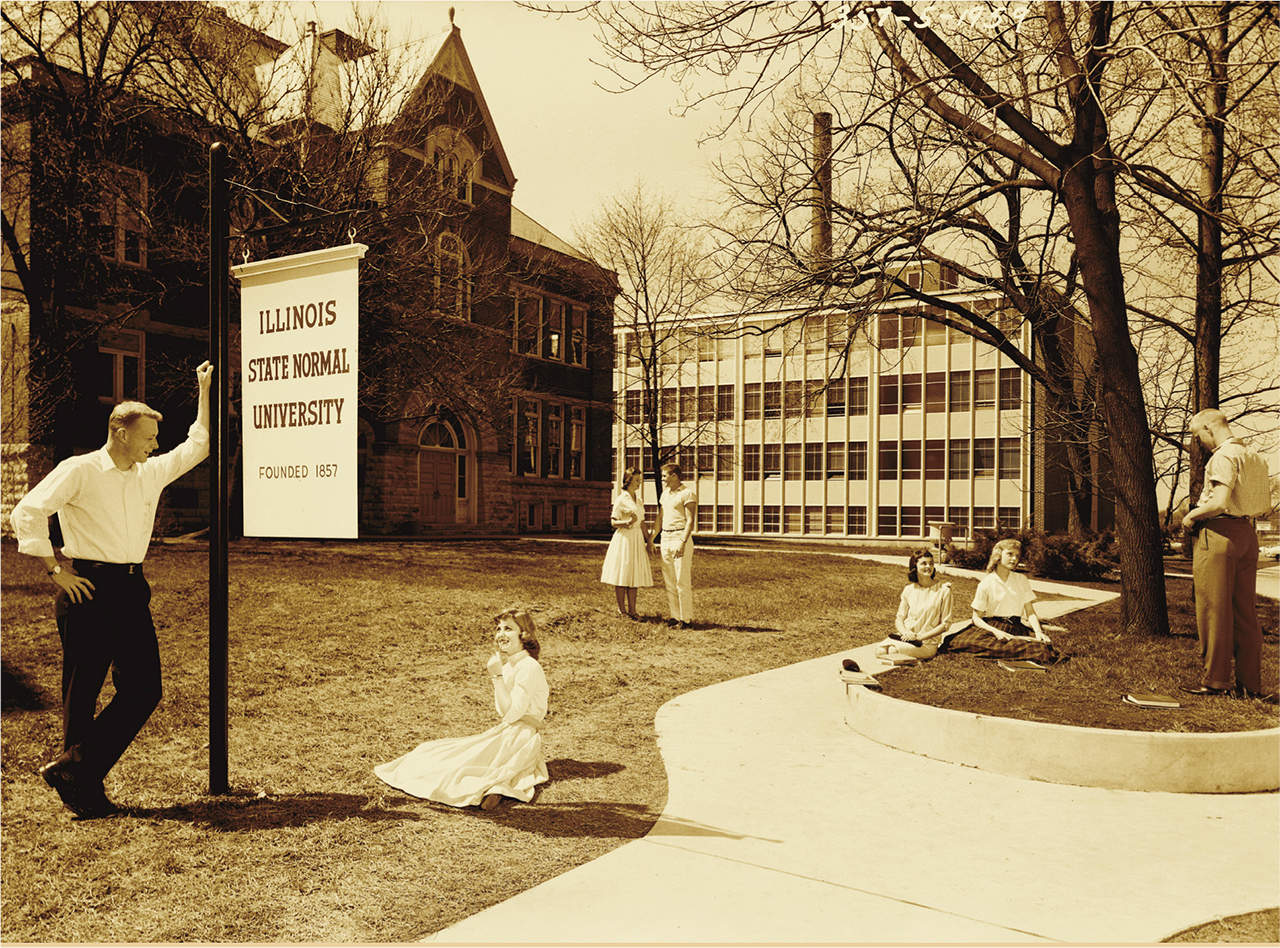 A new book from the Dr. JoAnn Rayfield Archives at Illinois State University explores more than the history of campus buildings in images. It delves into the rich story of the University, and Illinois State’s place on the national scene.
A new book from the Dr. JoAnn Rayfield Archives at Illinois State University explores more than the history of campus buildings in images. It delves into the rich story of the University, and Illinois State’s place on the national scene.
“People don’t realize how Illinois State’s story ties in with the country’s history,” said University Archivist April Karlene Anderson, who scoured some of the hundreds of thousands of images stored in the archives for the new book in the Arcadia Publishing’s The History Series, Illinois State University.
Within the pages of the book, Anderson pointed to a rendering of the original Quad on campus. “This was submitted by William Saunders, the landscape designer who planned the Gettysburg Cemetery after the Civil War,” she said. “And his designs influence our Quad. That one image briefly tells of someone of national importance and his impact on our University.”
As a companion to the book, Milner Library will host the exhibit The Walls Speak: Telling ISU’s Story Through its Campus Buildings on the second floor of Milner, running from October 2 to December 16. The exhibit features historic artifacts from buildings showcased in the book as well as a “first look” at some of the book’s photographs and stories. Anderson will give a talk on the exhibit at 3 p.m. Friday, October 20, on the third floor of Milner Library.
In their own, individual way, these buildings tell the larger story of the campus. — University Archivist April Anderson
More than 200 images grace the book, beginning with the land that would become the nationally celebrated University. “We started with the open prairie because it helps to define Illinois State, as much as that first, great building—Old Main—as the foundation of the University,” said Anderson.
The book recounts the evolution of buildings, from Fell Hall which served as a residence hall for decades before becoming an academic building, to Williams Hall, which once served as the University’s library. “We use the images of Williams to do more than show pictures of the library, but as a chance to pay tribute to Head Librarian Ange Milner, who had a great influence across the state,” said Anderson. “In their own, individual way, these buildings tell the larger story of the campus.”
According to Anderson, the book is not only a celebration of Illinois State, but also a glimpse at the treasure of the university archives. “This is just the tiniest little grain…the tip of the iceberg of what we can do with this history housed in the archives,” she said, from creating displays for events to helping researchers unearth the past.
As the campus evolves and changes, the archival photos and texts also preserve a moment in time. “There’s a really great photo in the book of former President Robert Bone placing a time capsule in the Colby residence hall, which was torn down last year. Everybody is sitting around in their 1950s clothing,” said Anderson. “We know that someday those buildings may not be there, but we can relive the memories through this book.”
The book is available online and wherever books are sold.


